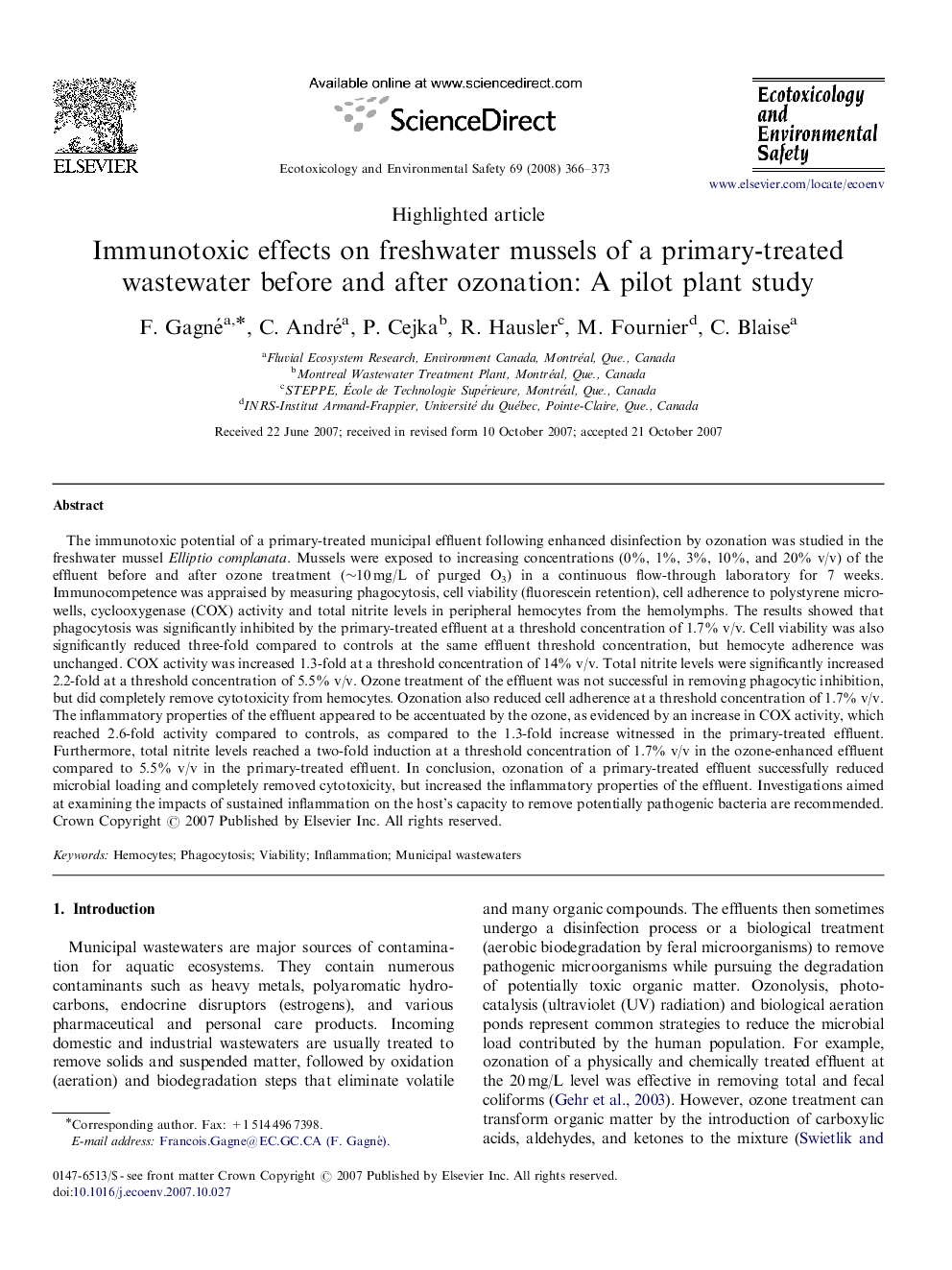| کد مقاله | کد نشریه | سال انتشار | مقاله انگلیسی | نسخه تمام متن |
|---|---|---|---|---|
| 4422284 | 1308539 | 2008 | 8 صفحه PDF | دانلود رایگان |

The immunotoxic potential of a primary-treated municipal effluent following enhanced disinfection by ozonation was studied in the freshwater mussel Elliptio complanata. Mussels were exposed to increasing concentrations (0%, 1%, 3%, 10%, and 20% v/v) of the effluent before and after ozone treatment (∼10 mg/L of purged O3) in a continuous flow-through laboratory for 7 weeks. Immunocompetence was appraised by measuring phagocytosis, cell viability (fluorescein retention), cell adherence to polystyrene micro-wells, cyclooxygenase (COX) activity and total nitrite levels in peripheral hemocytes from the hemolymphs. The results showed that phagocytosis was significantly inhibited by the primary-treated effluent at a threshold concentration of 1.7% v/v. Cell viability was also significantly reduced three-fold compared to controls at the same effluent threshold concentration, but hemocyte adherence was unchanged. COX activity was increased 1.3-fold at a threshold concentration of 14% v/v. Total nitrite levels were significantly increased 2.2-fold at a threshold concentration of 5.5% v/v. Ozone treatment of the effluent was not successful in removing phagocytic inhibition, but did completely remove cytotoxicity from hemocytes. Ozonation also reduced cell adherence at a threshold concentration of 1.7% v/v. The inflammatory properties of the effluent appeared to be accentuated by the ozone, as evidenced by an increase in COX activity, which reached 2.6-fold activity compared to controls, as compared to the 1.3-fold increase witnessed in the primary-treated effluent. Furthermore, total nitrite levels reached a two-fold induction at a threshold concentration of 1.7% v/v in the ozone-enhanced effluent compared to 5.5% v/v in the primary-treated effluent. In conclusion, ozonation of a primary-treated effluent successfully reduced microbial loading and completely removed cytotoxicity, but increased the inflammatory properties of the effluent. Investigations aimed at examining the impacts of sustained inflammation on the host's capacity to remove potentially pathogenic bacteria are recommended.
Journal: Ecotoxicology and Environmental Safety - Volume 69, Issue 3, March 2008, Pages 366–373